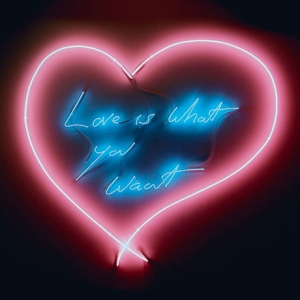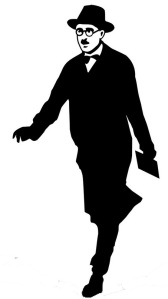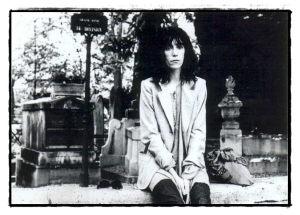Of course PJ Harvey had to win the Mercury prize. No one in the current music scene in the UK can touch her right now: Everything Everything, Adele, Tinie Tempah, Metronomy…they sound quite lame next to PJ’s brilliance and creativity.
So, it seems fitting that no support act was chosen to open for PJ Harvey tonight – it’s all about “Peej” and her music here at the Manchester Apollo (which is not 100% sold out, surprisingly). Even the merch stall looks a bit bare – some tour t-shirts and a few copies of her album (on vinyl only): no badges, no CDs, no old albums…looks almost as if Polly Jean Harvey can’t be bothered with such frivolities that, increasingly, are more important to contemporary acts. Like I said before, tonight is truly just about the music.
And, boy, is she on a league of her own. Nineteen years since her debut album, Dry (1992), PJ Harvey still manages to sound vital and able to renew her music with each new release.
The set consists mostly of songs off her latest album, Let England Shake, that sound punchier live than on record, and all seem very short, too. By third number, shouts of “We love you, Polly” coming from the audience will be heard intermitently during the rest of the evening. The atmosphere is dark and sober, but, surprisingly, never tiresome or melancholic. Obviously not as rock’n’roll as the Uh Hu Her tour, but quite more upbeat than the solitary performances she did promoting her previous album, White Chalk.
PJ stands on a corner of the stage, far apart from her three-piece backing band (which includes long time collaborator John Parish) who stand tightly on the opposite corner.The stage lights are simple, stark, and Polly Jean drifts in and out of the spotlight throughout the set, almost like a ghostly apparition. All very theatrical.
But despite this only concession to theatrality, the delivery is always very no-nonsense, very direct, with no chatter between band members or with the public, and the music is always very simple, and very tightly played, with the highlight being always her amazing voice.
When she finally plays some of the old songs, especially Down By The Water and C’Mon Billy (from 1995’s To Bring You My Love) the audience is in raptures. Songs from Is This Desire? (’98) and Uh Hu Her (’04) also get played…but the most moving moment is left for the encore, with the song that closes a truly amazing set: ‘Silence’, from White Chalk. So beautiful, and a perfect way to finish a memorable evening.


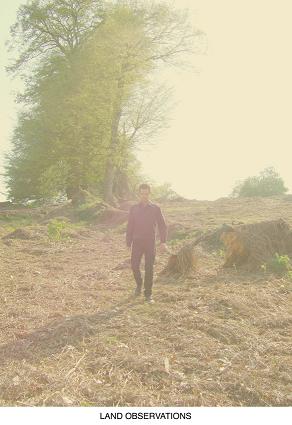 Any list of “road trip” music will always – inevitably – include Steppenwolf’s ‘Born To Be Wild’, perhaps some Beach Boys, Bruce Springsteen and Tom Petty. The concept of “road trip” is etched in our minds as something very American, and suitably bouncy and upbeat American music is the de rigueur choice to soundtrack any road trip worth it’s mileage. That’s great, providing you’re driving a Cadillac on one of those endless US highways, under the hot sunshine.
Any list of “road trip” music will always – inevitably – include Steppenwolf’s ‘Born To Be Wild’, perhaps some Beach Boys, Bruce Springsteen and Tom Petty. The concept of “road trip” is etched in our minds as something very American, and suitably bouncy and upbeat American music is the de rigueur choice to soundtrack any road trip worth it’s mileage. That’s great, providing you’re driving a Cadillac on one of those endless US highways, under the hot sunshine. When the Horrors first appeared on the scene, with their 2007 album ‘Strange House’, their future didn’t seem all that bright: lots of hype, faintly silly looks and not that many memorable tunes. They had a great sound and played some energetic gigs, but eventually were dropped by their label.
When the Horrors first appeared on the scene, with their 2007 album ‘Strange House’, their future didn’t seem all that bright: lots of hype, faintly silly looks and not that many memorable tunes. They had a great sound and played some energetic gigs, but eventually were dropped by their label. 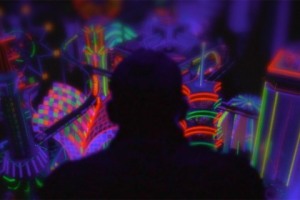 This film, directed by Gaspar Noé, was one of the best – and least seen – films to hit British screens in 2010. Now on DVD, it’s another chance for people to discover one of the most amazing, challenging and unique films of the past few years.
This film, directed by Gaspar Noé, was one of the best – and least seen – films to hit British screens in 2010. Now on DVD, it’s another chance for people to discover one of the most amazing, challenging and unique films of the past few years.